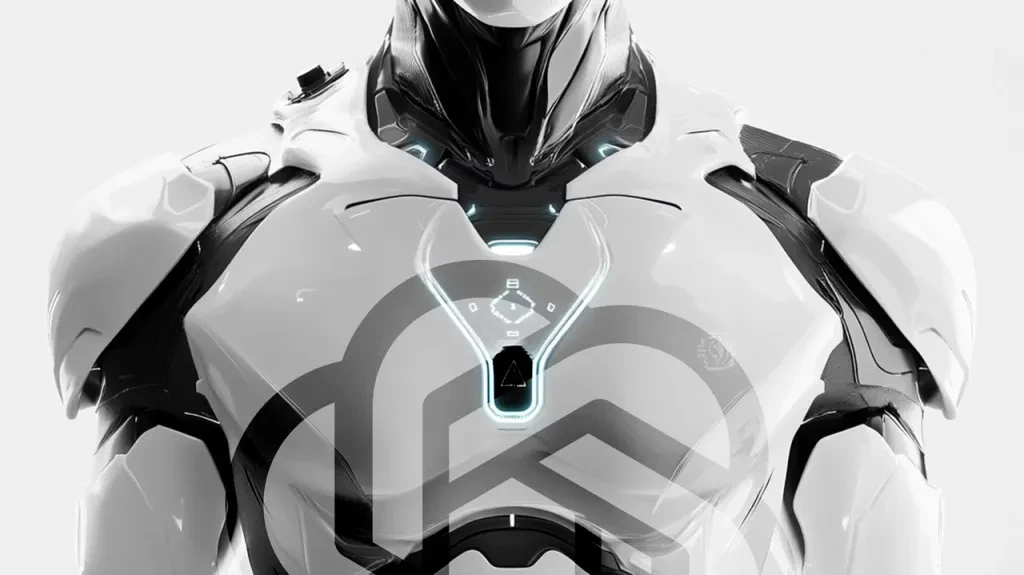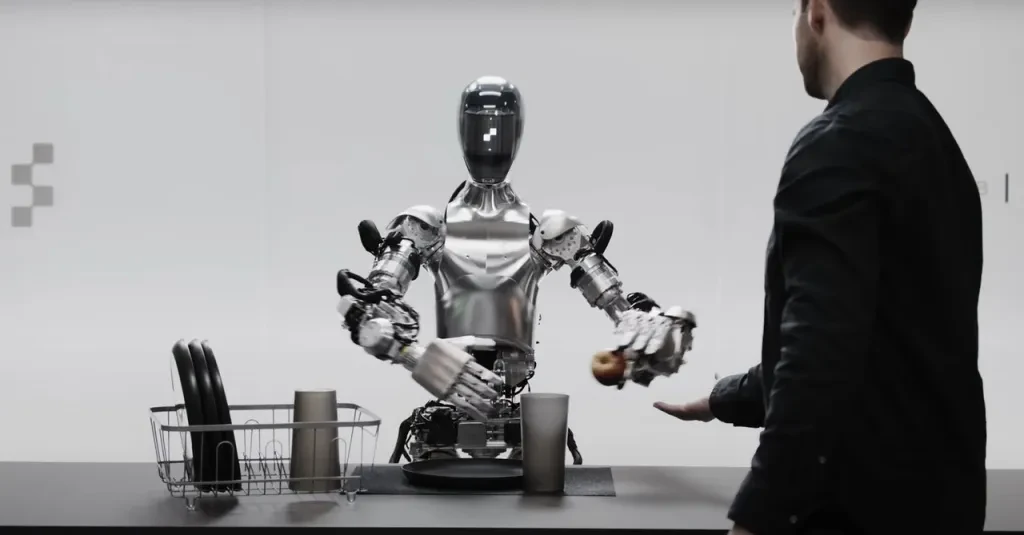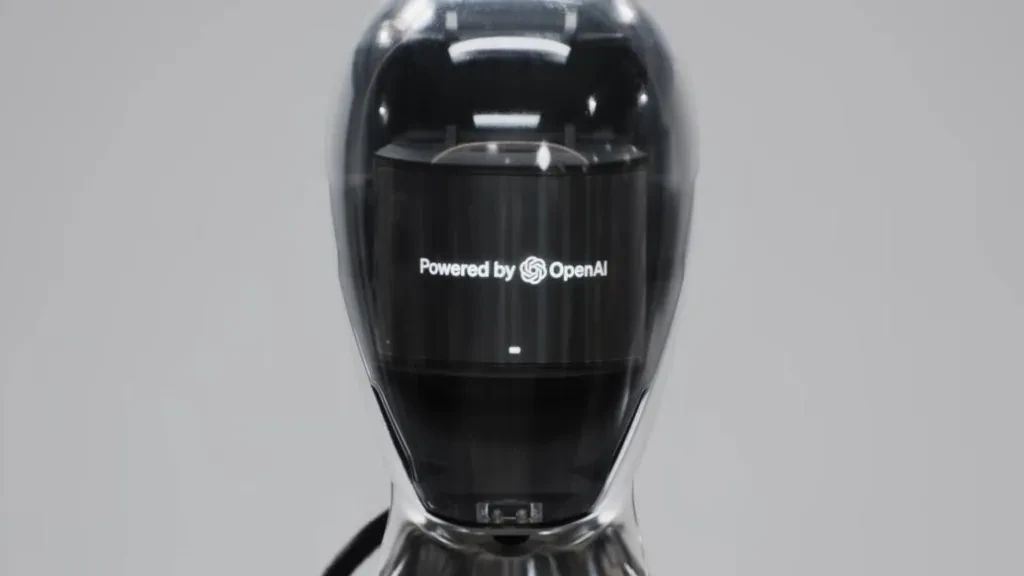Recently, OpenAI, fresh from its “12-Day Live Launch Event,” is reportedly considering the development of a “humanoid robot.”
Connecting the dots from previous reports, we might see a complete picture: At the end of October, Reuters reported that OpenAI is collaborating with Broadcom to develop custom AI inference chips. Theoretically, OpenAI could leverage this to create an AI chip to power humanoid robots.
In early November, Caitlin Kalinowski, former head of hardware for Meta’s AR glasses, joined OpenAI. At OpenAI, she is responsible for the “robotics and consumer hardware” division.
Additionally, OpenAI is currently hiring research engineers for a robotics team, further fueling rumors of its strong interest in humanoid robots.

Analysts believe that for OpenAI, it would be more strategic to collaborate with companies like 1X and Figure in developing humanoid robots rather than starting from scratch and facing competition. It is reported that the humanoid robots developed by companies like 1X and Figure already have GPT series large models built-in.
Notably, one of OpenAI’s investment targets, “Physical Intelligence,” although not developing similar humanoid robots, recently showcased an impressive household robot and has further plans to create a “general physical AI model.”

Editors at The Information believe that given Elon Musk’s assessment of humanoid robot products as “a $1 trillion revenue opportunity,” it is only a matter of time before big companies like OpenAI and Google develop humanoid robots.
However, according to sources, among OpenAI’s many major projects (such as its reasoning models and AI agents), developing humanoid robots is not as high a priority as any other. In other words, developing humanoid robots is currently the least important task for OpenAI.
Nevertheless, OpenAI’s ambition to venture into multiple tech fields seems evident: from launching its own search engine to compete with “Perplexity,” to introducing code tools “Canvas” and “Cursor” to compete, and planning to enter the embodied intelligence field, its intentions are gradually becoming clear.

Developers of humanoid robots believe that, compared to robotic arms working on factory or workshop assembly lines, humanoid robots can handle real-world tasks in a way that is closer to how humans do. They are convinced that “this world is designed for humans.”
Currently, there are two main directions in the development of humanoid robots: one is to perform goods handling tasks in warehouses to improve automation and logistics efficiency; the other is to serve as household robots, directly providing services to consumers.
OpenAI’s advantage in researching humanoid robots lies in its development of large language models that can facilitate direct communication between robots and humans, as well as enhance the robots’ ability to handle unexpected situations. Additionally, multimodal AI models can give robots the ability to perceive the surrounding world.

In fact, OpenAI is not new to this field. As early as 2018, OpenAI developed a robotic hand called “Dactyl” that can manipulate objects with dexterity similar to a human hand.
Moreover, OpenAI also open-sourced “Roboschool,” a set of simulation tools for training AI software embedded in robots, part of which is developed for humanoid robots. It is evident that OpenAI has accumulated some technical expertise in this area.
In 2021, OpenAI disbanded its robotics team to focus on generative AI. After three years of development, it has achieved significant breakthroughs in AI technology and hardware. Choosing to return to the field of humanoid robots at this time might be a good opportunity.
Source from ifanr
Disclaimer: The information set forth above is provided by ifanr.com, independently of Alibaba.com. Alibaba.com makes no representation and warranties as to the quality and reliability of the seller and products. Alibaba.com expressly disclaims any liability for breaches pertaining to the copyright of content.




